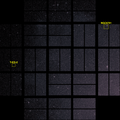
Size of this preview: 599 × 600 pixels. Other resolutions: 240 × 240 pixels | 479 × 480 pixels | 767 × 768 pixels | 1,023 × 1,024 pixels | 1,618 × 1,620 pixels.
Original file (1,618 × 1,620 pixels, file size: 1.46 MB, MIME type: image/png)
File history
Click on a date/time to view the file as it appeared at that time.
| Date/Time | Thumbnail | Dimensions | User | Comment | |
|---|---|---|---|---|---|
| current | 13:02, 31 October 2015 |  | 1,618 × 1,620 (1.46 MB) | Antonsusi | Brightness adjusted |
| 22:18, 30 December 2009 |  | 1,618 × 1,620 (1.43 MB) | Supportstorm | Try this again | |
| 22:17, 30 December 2009 |  | 1,618 × 1,620 (1.43 MB) | Supportstorm | Fix | |
| 22:16, 30 December 2009 |  | 1,618 × 1,620 (1.43 MB) | Supportstorm | Image Adjustment: Auto levels on contrast and color | |
| 17:55, 16 April 2009 |  | 1,618 × 1,620 (1.49 MB) | KGyST | Cropped | |
| 17:50, 16 April 2009 |  | 2,400 × 1,800 (1.58 MB) | KGyST | {{Information |Description={{en|1=This image from NASA's Kepler mission shows the telescope's full field of view -- an expansive star-rich patch of sky in the constellations Cygnus and Lyra stretching across 100 square degrees, or the equivalent of two si |
File usage
The following pages on the English Wikipedia use this file (pages on other projects are not listed):
Global file usage
The following other wikis use this file:
- Usage on de.wikipedia.org
- Usage on fr.wikipedia.org
- Usage on id.wikipedia.org
- Usage on ig.wikipedia.org
- Usage on it.wikipedia.org
- Usage on ja.wikipedia.org
- Usage on ka.wikipedia.org
- Usage on lb.wikipedia.org
- Usage on lv.wikipedia.org
- Usage on pnb.wikipedia.org
- Usage on pt.wikipedia.org
- Usage on ur.wikipedia.org
- Usage on uz.wikipedia.org
- Usage on vi.wikipedia.org
- Usage on zh.wikipedia.org


